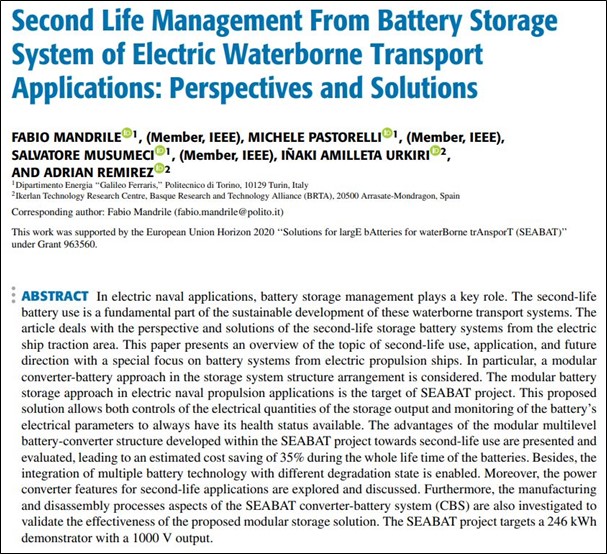Published: April 2023
Authors: Fabio Mandrile – Michele Pastorelli – Salvatore Musumeci (POLITO) – Iñaki Amilleta Urkiri – Adrian Remirez (IKERLAN)
Abstract: In electric naval applications, battery storage management plays a key role. The second-life battery use is a fundamental part of the sustainable development of these waterborne transport systems. The article deals with the perspective and solutions of the second-life storage battery systems from the electric ship traction area. This paper presents an overview of the topic of second-life use, application, and future direction with a special focus on battery systems from electric propulsion ships. In particular, a modular converter-battery approach in the storage system structure arrangement is considered. The modular battery storage approach in electric naval propulsion applications is the target of SEABAT project. This proposed solution allows both controls of the electrical quantities of the storage output and monitoring of the battery’s electrical parameters to always have its health status available. The advantages of the modular multilevel battery-converter structure developed within the SEABAT project towards second-life use are presented and evaluated, leading to an estimated cost saving of 35% during the whole life time of the batteries. Besides, the integration of multiple battery technology with different degradation state is enabled. Moreover, the power converter features for second-life applications are explored and discussed. Furthermore, the manufacturing and disassembly processes aspects of the SEABAT converter-battery system (CBS) are also investigated to validate the effectiveness of the proposed modular storage solution. The SEABAT project targets a 246 kWh demonstrator with a 1000 V output.
